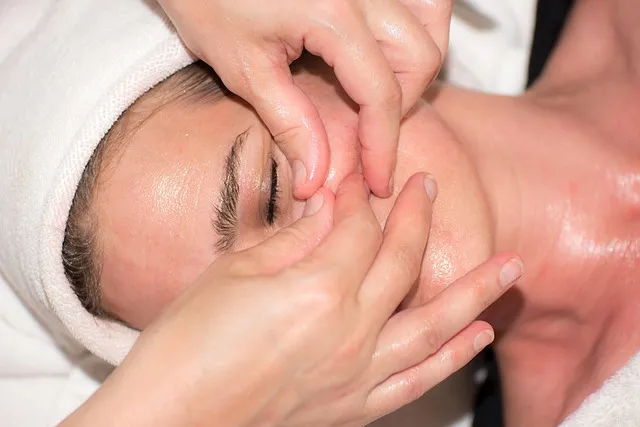Ganglion cysts in the hand or foot are non-cancerous (benign) swellings that develop on or close to a joint or tendon. It is stuffed with synovial fluid, a viscous, transparent, jelly-like fluid created by the tendon or joint. Struggling with the discomfort of a ganglion cyst and considering home remedies? If you're curious about how to drain a ganglion cyst yourself, it's crucial to know the risks, proper steps, and safer alternatives before taking action. In this guide, we’ll walk you through everything you need to know to make an informed decision.
How to Drain a Ganglion Cyst Yourself? 10 Best Ways
Even though surgery is the most popular form of treatment, several at-home solutions could offer short-term relief. Among the most well-liked at-home remedies for ganglion cysts are:
1. Compression wrap or splint
Warm compresses are an efficient treatment that reduces inflammation as well as the pain brought on by ganglion cysts. A compression wrap or splint can pressure the cyst to diminish its size or stop it from expanding.
- When applying this treatment, use a bandage to cover the cyst or a splint to immobilize the limb.
- Applying pressure to the cyst should be done cautiously because it could hurt or restrict joint movement.
2. Heat and cold therapy
Applying heat or ice may reduce inflammation or swelling in the cystic area.
- Apply a warm compress or a heating pad to the cystic area for 15-20 minutes to perform heat therapy.
- Apply an ice pack to the affected area for 15 to 20 minutes to receive cold therapy.
- When administering heat or cold to the skin, exercise caution since, if applied incorrectly, they can lead to burns or frostbite, respectively.
3. Massaging
Since ganglion cysts are fluid-filled sacs, rubbing them may cause them to rupture, which will at least temporarily lower the cysts' size. They tend to change in size, so even if the message doesn't eliminate them, they improve over time. Its size will be reduced, providing some alleviation. However, total cyst removal is possible with the right medical treatment.
- The cyst area can benefit from massage to increase circulation and lessen pain.
- Spend a few minutes gently circularly massaging the region.
4. Exercise
Daily exercise can help enhance joint flexibility and reduce stiffness.
- You can exercise with low impact, like cycling, swimming, or walking.
- Stretching should be done both before and after exercise.
- Stretching the joint could aid in reducing stiffness and increasing flexibility. Stretching should be done after warming up, and you should stop if you experience any pain.
- The swelling of the limb might be reduced by elevating it. Lay down and raise the limb with a pillow so it is higher than your heart.
5. Epsom salt
The immunomodulatory properties of magnesium in Epsom salt help reduce the body's generation of inflammatory cytokines. This reduces the affected area's pain, edema, redness, and inflammation.
- Take warm water in a bowl with half a cup of Epsom salt.
- For 15 to 20 minutes, soak the afflicted hand, wrist, or foot in this.
- Try to do this once every day or every other day.
6. Castor oil
There is an anti-inflammatory compound in castor oil called ricinoleic acid. As a result, the irritation and swelling in the affected area may be treated using castor oil.
- Apply castor oil on a cotton ball and dab it on the cyst.
- Bandage the cyst and leave it in place all night.
- Perform this 1-2 times each day.
- Continue doing this until the cyst is gone.
7. Apple cider vinegar
Acetic acid, a component of apple cider vinegar, has anti-inflammatory actions. As a result, it could aid in lowering ganglion cyst-related discomfort, edema, and inflammation. However, this effect is not supported by scientific data.
- Combine water and apple cider vinegar to use this cure, then dunk a cotton ball in the mixture.
- Put a bandage over the cyst after applying the cotton ball there.
- Until the cyst is gone, leave the application on overnight and keep doing it.
8. Tea tree oil
Tea tree oil has anti-inflammatory qualities. It might aid in lowering swelling and fluid accumulation inside the cyst.
- Add a teaspoon of coconut oil to two to three drops of tea tree oil.
- Put some on the harmed area.
- Put a bandage on the cyst and leave it there.
- Do this just one time per day.
9. Ginger
Eating ginger may help to lower inflammation and boost circulation.
- You can include it in your diet by grating fresh ginger into dishes or brewing it into tea.
- A healthcare professional should be consulted before taking any supplements. However, you can also take supplements that contain ginger.
10. K tape
A K tape can provide stability and support to the troubled joint, aiding in the ganglion cyst's recovery. Additionally, it enhances muscle strength and pain relief.
- Bend your wrist or foot at the troublesome joint.
- Don't strain your joint when applying the K tape to the troublesome area.
- For a few days, wear it.
- For further information, read the pack's instructions.
- For 2-4 days, you must leave this tape on the injured joint.
Medical Treatment for Ganglion Cysts
Initially, your doctor might advise waiting a little while to see if the ganglion cyst cures independently. Your doctor may advise the following if it doesn't heal or starts to hurt and restricts joint movement:
- Using a brace or splint to immobilize the injured joint temporarily
- aspiration to remove the cyst's fluid
- Surgery might only be necessary if all other measures have failed.
READ ALSO How to Shrink a Cystic Pimple Overnight?
Final Thoughts
In this article, we learn How to Drain a Ganglion Cyst Yourself. Ganglion cysts can be treated medically in a variety of ways. Home treatments for ganglion cysts are excellent at reducing discomfort and other symptoms. Some recommend treating ganglion cysts using herbal or complementary treatments, such as essential oils or dietary supplements. The success of these treatments has to be supported by further scientific data, and they might only be suitable for some. Before attempting herbal or other remedies, speaking with a healthcare professional is crucial.
READ ALSO How to get rid of Sebaceous Cyst: 7 Effective Methods & Treatment
Frequently Asked Questions
How long does a ganglion cyst take to disappear?
Usually, a ganglion cyst will go away in a few weeks, only to return months or even years later. However, not everyone will experience this; some people may eventually fully heal from their cysts.
Can ganglion cysts develop into cancer?
Ganglion cysts are non-cancerous, in contrast to tumors and other cysts. They may get bigger occasionally, but that is entirely normal.
What happens if an untreated ganglion cyst?
If a ganglion cyst doesn't hurt or restrict your joint movement, it won't likely create any issues.
Is a ganglion cyst better treated with heat or ice?
Both approaches are beneficial and can be used as you like. The swelling of your ganglion cyst might be reduced by placing an ice pack on it. Your pain will go away, your blood flow will increase, and the fluid will drain if you apply a warm compress.
Can you burst a ganglion cyst by pressing on it?
No, do not press or pressure the ganglion cyst. Without it, you risk getting a further infection and harming the tissues and bones in the affected area.
Which vitamin deficiency causes ganglion cyst?
Deficiency of Vitamin D can increase the risk of an injury to the joints and tendons, which – in turn – increases the risk of formation of ganglion cysts.
Can ganglion cysts go away naturally?
Yes, ganglion cysts usually go away on their own.
Who is at risk for ganglion cyst?
Research shows that women, especially between the ages of 20 to 50 are 3 times more likely to get ganglion cysts compared to men.
Reviewed by







